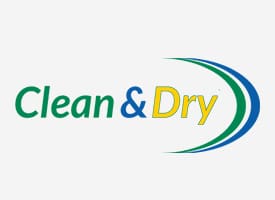Understanding Carpet Fibre Types and How They Affect Cleaning Results
Carpets come in a wide range of materials, textures, and weaves, each with its own strengths and cleaning requirements. While most homeowners choose carpets based on style and comfort, few realise how much the type of fibre determines how easily the carpet can be cleaned, how it resists stains, and how long it lasts. For professionals like Clarks Carpet Care, understanding these fibres is key to delivering the right cleaning method — ensuring lasting results without damage.
Why Fibre Type Matters
Every carpet fibre has a unique structure that affects how it absorbs moisture, retains dirt, and responds to heat and cleaning agents. A method that works perfectly for synthetic fibres like nylon could damage natural fibres like wool. Using the wrong cleaning technique risks shrinkage, colour bleeding, or fibre distortion.
Professional carpet cleaners assess the fibre type before selecting cleaning solutions or machinery settings. This ensures each carpet receives a tailored clean that removes dirt effectively while maintaining its colour, texture, and integrity.
The Main Carpet Fibre Types
Let’s look at the most common carpet materials found in homes and how each responds to cleaning:
1. Wool
Wool is a luxurious natural fibre renowned for its softness and durability. However, it is also highly absorbent and sensitive to heat. Wool carpets can hold up to 30% of their weight in moisture, making them prone to shrinkage if over-wet. They also contain natural oils that resist soiling but can be stripped by harsh detergents.
Best cleaning method: Low-moisture or controlled hot water extraction using wool-safe solutions. Clarks Carpet Care uses gentle, pH-balanced products that protect the fibres while restoring the natural texture and sheen.
2. Nylon
Nylon is one of the most popular synthetic carpet fibres due to its strength and resilience. It resists crushing and recovers well from heavy foot traffic. Nylon carpets can, however, be prone to static and absorb some stains.
Best cleaning method: Hot water extraction with temperature-controlled settings to lift stubborn dirt and refresh the pile.
3. Polyester
Polyester offers vibrant colour retention and a soft feel underfoot, but it tends to attract oily stains and can mat over time. It’s best cleaned with solutions that break down oil-based residues without leaving sticky deposits.
Best cleaning method: Steam cleaning using eco-friendly degreasers to lift and rinse away residues effectively.
4. Polypropylene (Olefin)
Polypropylene is highly stain-resistant and moisture-proof, making it popular in areas prone to spills or dampness. However, it can flatten easily and attract oil.
Best cleaning method: Warm water extraction with neutral pH solutions, followed by grooming to restore fibre shape.
5. Triexta (PTT)
A newer synthetic fibre, Triexta combines the durability of nylon with the softness of polyester. It’s naturally stain-resistant and responds well to eco-friendly cleaning agents.
Best cleaning method: Standard hot water extraction, as it can handle heat and moisture without risk.
How Fibre Affects Stain Removal
Different fibres absorb liquids at varying rates. Natural fibres like wool soak up spills faster, while synthetics resist penetration for longer. This means the same stain may require different approaches depending on the carpet.
At Clarks Carpet Care, we analyse stains and fibre type before treatment. Organic stains (like food or drink) and synthetic stains (like ink or paint) require specific products to lift them without discolouration.
Colourfastness and Cleaning
Dye stability is another critical factor. Wool and some blended carpets are more prone to colour bleeding under heat or alkaline conditions. Testing a small patch before cleaning prevents costly damage. Our team uses temperature-controlled extraction and dye-safe detergents to preserve colour vibrancy.
Texture and Pile Considerations
The carpet’s texture — cut pile, loop, or shag — also influences cleaning outcomes. Loop pile carpets (like Berber) can trap dirt deeper in the loops, requiring powerful extraction, while shag carpets need gentler handling to avoid matting. Correct technique ensures the pile is lifted and fluffed rather than compressed.
The Clarks Carpet Care Approach
Our technicians are trained to identify carpet composition quickly and accurately. Before any cleaning begins, we perform:
- Fibre testing to confirm material type
- pH compatibility checks for cleaning solutions
- Colourfast testing to prevent fading
- Pile inspection to determine cleaning direction
This methodical approach ensures precision cleaning for every carpet type, maximising cleanliness without risk.
Maintaining Carpets Between Professional Cleans
No matter the fibre, consistent maintenance helps prolong carpet life:
- Vacuum at least twice a week to remove dry soil.
- Treat spills immediately with cold water and a blotting cloth.
- Use entry mats to reduce tracked-in dirt.
- Schedule professional cleaning every 6–12 months.
The Science of Long-Term Carpet Care
Regular professional cleaning not only removes dirt but also prevents microscopic damage. Fine grit particles act like sandpaper, wearing down fibres with every footstep. Hot water extraction lifts this grit before it can cause abrasion, protecting both natural and synthetic carpets alike.
Conclusion: The Right Method for Every Fibre
Carpet fibres are the foundation of your flooring’s comfort and beauty — but they require the right care. Understanding fibre types ensures your cleaning service is not only effective but safe.
At Clarks Carpet Care, we take the guesswork out of the process, applying expert knowledge and eco-friendly technology to restore every carpet to its best possible condition. Whether it’s luxurious wool or resilient nylon, our tailored approach guarantees results that look cleaner, feel softer, and last longer.







